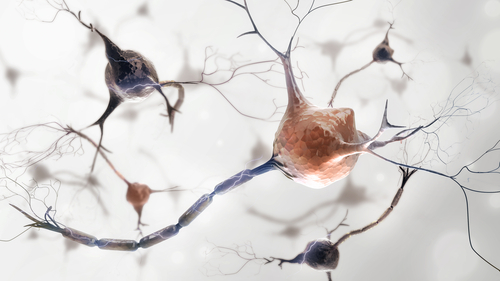IL-4 Cytokine, an Anti-Inflammatory Molecule, Linked to Neuron Damage in Early Parkinson’s Study

The anti-inflammatory molecule interleukin (IL)-4 contributes to the neurodegeneration observed in Parkinson’s disease, a study in rats reports.
The research, “Interleukin-4 Contributes to Degeneration of Dopamine Neurons in the Lipopolysaccharide-treated Substantia Nigra in vivo,” was published in the journal Experimental Neurobiology.
Parkinson’s is characterized by the progressive loss of dopamine-producing neurons in the substantia nigra — a midbrain area key to muscle control — resulting in lower levels of dopamine, a neurotransmitter, and Parkinson’s motor symptoms.
Brain inflammation is increasingly associated with Parkinson’s progression. Both post-mortem samples of human brains and animal disease models show reactive microglia – nerve cells involved in immune responses to infection or injury. Microglia release pro-inflammatory molecules called cytokines, which are involved in neurodegeneration in the substantia nigra. However, the precise mechanism linking microglia to neuronal loss remains unclear.
IL-4 is a cytokine of benefit to patients with sepsis or multiple sclerosis, and also is involved in brain repair after stroke (cytokines are small proteins of importance to cell communication or signaling). In a mouse model of Alzheimer’s, IL-4 delivered through gene therapy was seen to increase neurogenesis — the formation of neurons from neural stem cells — and learning.
But its role in neurodegeneration has been controversial. On one hand, IL-4 has been linked to the death of reactive (damaging) microglia and to neuronal survival. On the other, microglia expressing IL-4 were shown to promote neurodegeneration in rats administered with amyloid-beta – the major component of senile plaques – or thrombin, an enzyme involved in blood coagulation.
To better understand IL-4’s possibly damaging role in Parkinson’s disease, researchers in Korea analyzed dopamine-producing neurons in rats injected in the substantia nigra with an inflammatory activator called lipopolysaccharide (LPS).
Compared to a control group of rats, those given LPS had a significant loss (62%) of dopamine-producing neurons in the substantia nigra at three and seven days post-injection. LPS-injected brains revealed activated microglia and degenerated dopaminergic neurons. Higher levels of phagocytes (cells that provide innate immunity) were also found in LPS-injected animals.
Data showed higher IL-4 levels in the substantia nigra of LPS-injected rats as early as one day after injection, reaching a peak at day three. IL-4 was found exclusively in activated microglia.
Injecting an IL-4 neutralizing antibody to inhibit IL-4 significantly eased LPS-induced toxicity, as shown by greater numbers of neurons in the substantia nigra, including those that produce dopamine.
The neutralizing antibody also blocked microglia activation and production of IL-1beta, a cytokine involved in inflammation. Levels of IL-1beta are known to be higher than usual in the cerebrospinal fluid (the liquid filling the brain and spinal cord) of Parkinson’s patients.
Researchers also observed that neutralizing IL-4 rescued LPS-caused disruption of the blood brain barrier (BBB) — a semipermeable membrane that protects the brain — and which showed evidence of “leakage” in LPS rats compared to controls. Damage to the BBB is observed in Parkinson’s patients.
The antibody was also able to halt the depletion of substantia nigra-specific astrocytes — a cell linked to BBB maintenance and formation — at three days post-injection.
“In the present study, IL-4 contributes to microglial activation, production of IL-1β, and disruption of BBB and astrocytes which subsequently led to the degeneration of [dopamine] neurons in the LPS-treated [susbtantia nigra],” the researchers wrote.
“Our results suggest that IL-4 could play the detrimental roles in neurodegenerative diseases such as [Parkinson’s].”






